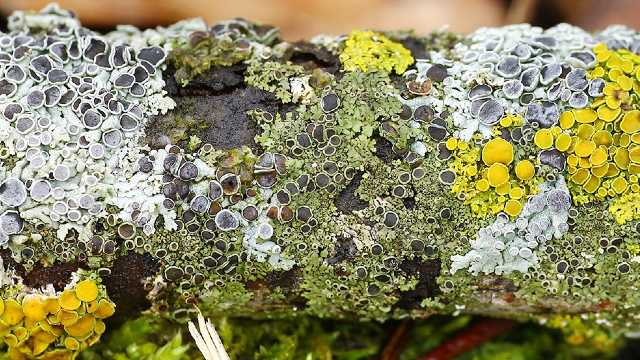By Bill Cook
MSU forester and biologist, retired
Organisms growing on trees concern some folks, or sometimes, engender curiosity. Typically, the first reaction is that they’re “bad” for the tree. Not usually so.
“Hey, what’s that green fungus growing on my tree?” “Is my tree sick”? “How do I get rid of that stuff?”
There are many life forms that inhabit tree bark, not to mention all the other parts of a tree. For example, oaks can host hundreds of species from many biological categories. Most of them are harmless to the tree.
However, those queries about “green stuff” or “fungus” that I commonly receive generally refer to lichens. Lichens are good. Lichens are cool. Lichens are weird.
In a nutshell, a lichen sports a cooperative relationship between a fungus and an alga, or more than one alga species. It’s a form of “symbiosis”. Each species has special adaptive characteristics that, together, defy classification.
If one has to make a rule (often broken), the fungus partner provides shelter and a moist micro-habitat and the algae photosynthesize and share the food.
The most common in our region, perhaps, is a “green shield” lichen, usually a circular or oval colony seen on tree trunks, rocks, and other surfaces. Other common lichens include “old man’s beard”, “reindeer moss (lichen)”, and “British soldier”. But there are many others, often with impressive shapes and colors.
Biologists sometimes group lichen appearance into three overall categories; crustose, fruticose, and foliose. Crustose lichens are, well, sort of crusty. They adhere closely to whatever they’re growing upon. Foliose lichens appear leafy and grow in moister microhabitats, such as next to shady waterfalls. The fruticose lichens have lots of three-dimensional forms, such a caribou lichen or old man’s beard. There are other descriptors for lichens as well.
Fungi, by themselves, have long presented classification challenges. Lichens are even more mysterious. The Latin, or scientific, names change regularly and are labeled after the fungal partner. Lichen lifecycles are frequently complex, highly varied, and offer plenty of opportunities for new discovery.
Humans like to classify living things, but lichens give us a run for our money. As technology advances, we can see microscopic and genetic characteristics, which tend to be more consistent than the older eyeballing techniques that have historically been employed. So, what at one time, appeared to be two different lichens are really the same species. And so on.
Seeing how lichens are a combination of algae and fungi, they have equally bizarre reproductive methodologies. Asexual strategies include something as simple as a broken piece forming a new colony. Sexual reproduction involves the recombination of chromosomes that form spores, but lichens can have some complicated ways of doing all this.
An entire set of jargon, or language, is applied to describing lichens and their lifecycles. The words would be handy when playing Scrabble.
All this said, avoiding most of the biology, do lichens hurt trees? No. Lichens simply use the bark as a substrate upon which to grow. They do not invade the living tree tissues that lie under the bark.
Lichens are a fair barometer of atmospheric health. They tend not to grow in areas with air pollution. That does not necessarily mean that a lack of lichens on your backyard trees spell polluted air. Rather, when present, lichens suggest good clean air.
More important, I suggest, is the visual quality of lichens. There are so many shapes and colors, including neon greens, yellows, and oranges. They can look like the surface of burnt toast, or mini trees, or a lettuce salad. Lichens also tend to be slow growing. So, if you see them, try not to scrape them off the tree or trample a colony on the ground.
With a bit of observation, you might find that you “lichen” them.












